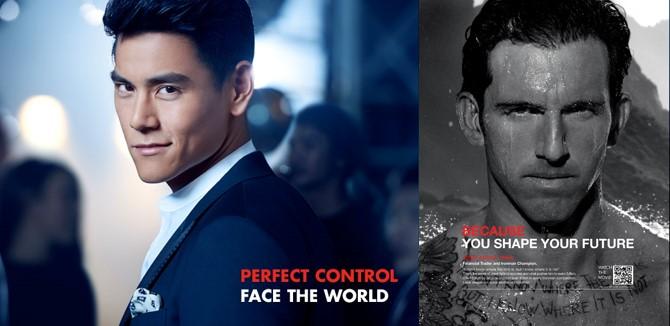

When it comes to brand strategy, it’s important to move beyond traditional gender segmentation and broaden our perspectives. While household items, groceries, jewelry, and skincare may have been traditionally associated with women as the primary target audience, it’s crucial to recognize the evolving role of men and their involvement in these categories.
By rethinking gender stereotypes, brands can tap into a whole new segment of consumers and expand their target audiences. Men are equally interested in household items, groceries, and skincare, and their emotional needs should not be underestimated. Embracing inclusivity and understanding the diverse preferences of consumers can lead to innovative brand strategies that resonate with both men and women.
To maximize brand reach and relevance, it’s essential to adopt a holistic approach that appeals to a wide range of customers. By challenging preconceived notions and recognizing the changing dynamics of consumer behavior, brands can create more inclusive brand strategies that capture the attention and loyalty of diverse audiences. Break free from traditional gender-based assumptions and unlock the untapped potential of engaging both men and women in your brand narrative.
Communication to men should not be limited to male-dominated brands in the likes of cars and IT industries or wait till Fathers’ Day to communicate with Dads. Imagine the impact to your reach and sales if your brand is not just able to appeal to the female consumers, but also the other half of the population? We tend to take the easy way out and rationalize that men fall back onto functional benefits of the products. Hence there is no need to appeal to their emotional side or engage them in categories that are traditionally not of their interests. The truth is, men are emotional beings too. They, too, get swayed by their desires and emotions. It is often a case of insufficient understanding and effort to reach out to men than a case of rational thinking on men’s side. In this article, we will share 4 mindsets that brands should adopt if they want to reach out to the level-headed men (and women too).
Popularized by the book “Men are from Mars, Women are from Venus”, people tend to generalize behavioral attitude differences between men and women and form stereotypical images in their mind – Women are emotional and delicate, love fashion, shopping, pamper themselves with tons of skincare and spa, handles the household chores and cooking, while men are rational and rugged, shop functionally with goal, love drinking, driving and all things techy.
With the rise of millennials and the change in media exposure, we are seeing a shift in some of these stereotypes. Unilever AXE’s “Is It OK for Guys” campaign in 2016 is a good example that attempted to set everyone to rethink the stereotype boxes that one has put upon the male gender.

What has traditionally been accustomed that men did not want to be caught using skincare product is changing, especially here in Asia where men are more receptive and open about their skincare regime. In the Biotherm Homme skincare advertisement below, we can also see the image of men changing from the rugged man being portrayed in US to the Asian men with clean and smooth edges.

Traditionally, Asian men are seen as the head of the household who hold the fort and provide for the family financially, while females play the role of a virtuous wife and nurturing mother who take care of things at home. In today’s times, fathers are no longer the distant and stern figure but are becoming more involved. Recognizing the changing role of Asian men in parenting, Heinz Baby’s advertisement highlighted the struggles and thoughts that went through the mind of fathers in the journey of parenting, striking a chord with these new fathers.

No one human is the same and everyone desires to be recognized as an individual with their own unique preferences. Stop categorizing men as one whole collective group of species but start see them as individuals. Understand the life stage he is currently at and how your product can make their life easier. It is only when we see them as individuals that we are able to see beyond the surface, into the depth of what really makes them tick.
As part of the study in preparation for a possible F1 motorsports sponsorship in Shanghai by an international beer brand, Labbrand embarked on a study to uncover the relationship that men have with cars, motorsports and drinking. No longer are men all passionate car junkies who love control and speed but individuals who may be private penny-pincher, outgoing explorer, emotional thrill-seeker, life chance-taker or egoistic racer. Each have different needs and use of cars, and attitude towards drinking and driving.
When you have achieved point 2 above, you would also be able to see beyond the obvious generic benefits that your brand brings to him, and uncover real pain points or emotional benefits resonance. Take for example in the case of a hair colorant brand, which would appeal to you more? “An effective solution to make you look younger” or “look sharp and smart at work without hassles of visible hair roots and cyclical maintenance”?
The latter addresses concerns of 1) being held ransom with periodic coloring of hair to avoid visible hair roots, and 2) being perceived as less effective at work due to age. Resonance kicks in when one feels that the brand truly understands him and solves his concerns and needs. A generic one-shot-hits-all is not going to get you anywhere close to the consumers’ heart.
Moving beyond functional specifications and features of its products, Labbrand developed the “Play Your Winning Hand” campaign for the launch of one of Logitech’s gamer keyboards. Getting to the insights and emotions of gamers, Labbrand found the overlap of characteristics between serious PC gamers and card gamers. Both groups are playing the best combination of their cards on hand for a game of wits. Similarly, Logitech keyboard and mouse is the ideal combination for gamers to play their winning hand.

Moving one step further than an insight, how could we shift the thinking from the brain to the heart? In the case of an airport operator, a logical emotional extension would be that it’s not just a place for air transportation, but also an emotion-filled place with stories of separation and reunions. Even with the topic of separation and reunions, how can we strike a chord deep in consumers’ heart?
For a small country like Singapore, Changi Airport is not just for international travelers travelling in & out of the island, but also a shopping or dining destination for the locals. However, instead of appealing to the consumers with highlights of congregation of shopping and food options, best in class facilities, or seamless operational efficiency that the airport is renowned for, Changi Airport speaks to the locals through stories that tuck at their heartstrings. Be it a plane take-off or landing theater, a family weekend tram-ride adventure between terminals or as a teenager study enclave, Singapore Changi Airport holds more meaning to the locals at different stages of their life. Leveraging on these emotional moments, Changi Airport produced a short film with stories that are highly relatable to Singaporeans. Through the lens of Uncle Lim, a limousine cab driver who frequent airport the most, moments of a driver, a father, a boyfriend, a proud Singaporean were all brought alive to rekindle the deep feelings and ties one has with the airport.

An in-depth understanding of our target audience is the fundamental that leads to the differences between a mediocre and a great brand strategy. Be it a new product launch or a marketing plan for the year, a plan without sound insights would not yield fantastic results.
Sound insights come from a true understanding of your target audiences. Regardless of which gender is your target audiences, the fundamental truth of understanding their psychographic needs and solving real needs with your products or services stays. Before settling for “universal truths” that have been known for ages, take a step back and question if these “universal truths” have evolved with times and cultural differences. A crystal-clear strategy backed by sound insights before any rollout or execution could save you from unnecessary detours in the journey.
A Labbrand Group Company © 2005-2024 Labbrand All rights reserved
沪ICP备17001253号-3To improve your experience, we use cookies to provide social media features, offer you content that targets your particular interests, and analyse the performance of our advertising campaigns. By clicking on “Accept” you consent to all cookies. You also have the option to click “Reject” to limit the use of certain types of cookies. Please be aware that rejecting cookies may affect your website browsing experience and limit the use of some personalised features.